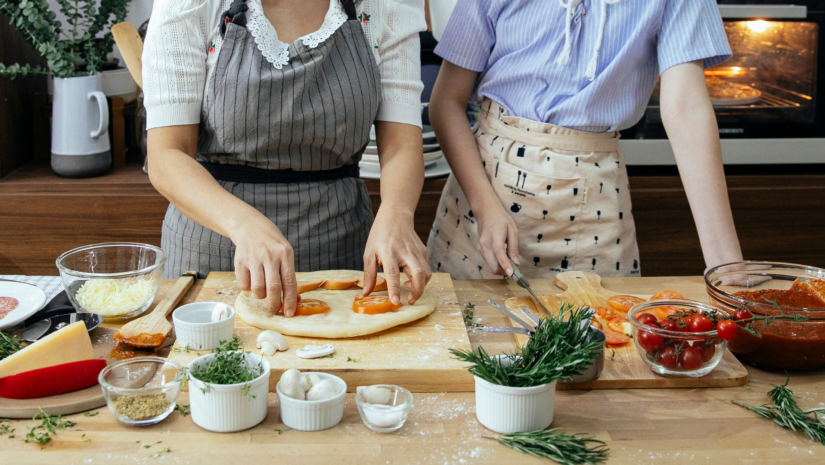Blog & News
Food waste

One of the best ways to limit food waste at home is by knowing how to improvise in the kitchen. For some people, this seems very obvious and simple to do, but for others it’s quite a challenge. If you’re not confident enough in your culinary abilities to start cooking without a recipe, don’t worry, I was exactly like you not so long ago and I’m going to share my best tips for incorporating this practice into your daily routine!

Use the resources at our disposal
Cooking with what’s already on hand, rather than buying new food, is the basis of anti-waste. But that doesn’t mean we can’t still browse our favourite recipe books and websites! Good old Google can be used to enter the ingredients you have on hand. For example, if you have broccoli, spinach and mushrooms in the fridge, write “broccoli spinach mushroom recipe” in the search bar and you’ll have several options pulled up for you.
You can also use your favourite recipe sites to learn the basic techniques of a recipe you want to cook, and then adapt it to what you have on hand. For example, if you want to make a squash and asparagus risotto, you could find a basic risotto recipe and add the ingredients you want to use, or substitute ingredients.

Substituting ingredients
Substitution is the best way to increase your culinary confidence. You follow a recipe, so you’re reassured, but you modify certain elements, so you can develop your creativity. Most vegetables can be swapped, as long as you’re swapping greens with greens, herbs with herbs, and the firmer vegetables with each other. Just bear in mind that firmer vegetables take longer to cook. Fruits, sources of protein, fats, spices and grains can also be easily substituted. If you’re new to substituting ingredients, start by changing one or two at a time and you’ll be on your way to success!
When it comes to changing ingredients for pastries, sauces and condiments, there are a few basic rules to follow. You can find several guides for substitutions online. Here are the ones I find most useful in the kitchen.

The next time you want to go back to the grocery store for an item or two, ask yourself whether you don’t already have something that could be used.

Using recipe templates
Once you’ve practised substituting like a pro, you’ll be able to create your own “leftovers” recipe templates. In recipe templates, the names of specific ingredients are replaced by their category. For example, “carrot” becomes “vegetable” and “brown sugar” becomes “sweetener”. There are a few books written in this format, such as Cuisiner sans recette by Véronique Bouchard and Défis zéro gaspi: Techniques et canevas pour réduire le gaspillage alimentaire by Florence-Léa Siry (French only). Here are some examples of recipes I often make with a template: quiche, pâté, soup-meals, meatballs and even sweet or savoury muffins!

Keeping essentials stocked
In conclusion, to succeed with all these fridge-free meal tips, you need a basic pantry that, when properly stocked, will always allow you to concoct a complete meal, no matter what’s left in the fridge. With a little experience, you’ll be able to put together a list that suits your needs and preferences. In the meantime, you can check out my personal recommendations right here.
To find out more, sign up for the next Food Fight workshop on the theme of anti-waste cooking. We look forward to seeing you there and sharing our thoughts with you!

Experte de la lutte contre le gaspillage alimentaire
Elisabeth Paradis
Passionnée de bouffe, Elisabeth aime utiliser l'alimentation comme façon de connecter avec les gens. Pour elle, manger est lié au plaisir et au partage, mais aussi à ses valeurs environnementales. Si elle n'est pas dans sa cuisine, vous la retrouverez dans son jardin, sur son vélo, ou en train d'être la fan numéro 1 de ses chats Dumpling et Kimchi.
View all posts...Related posts :
Contact us
Earth Day Canada
5818, boulevard Saint-Laurent
Montréal (Québec) H2T 1T3 Canada
Phone : (514) 728-0116
Toll free : 1 800 424-8758
Fax : (514) 303-0248
Email: hello@earthday.ca
2025 © Earth Day Canada. All rights reserved.
Privacy policy · Terms of use · Trademark









